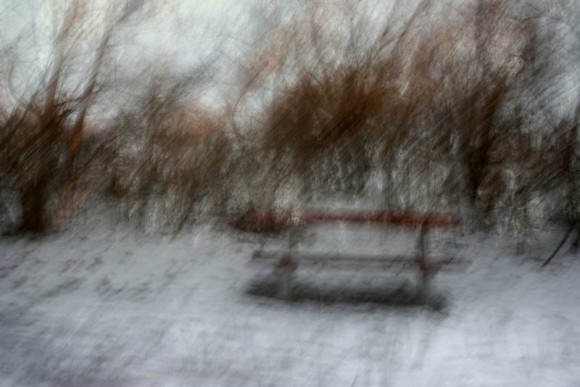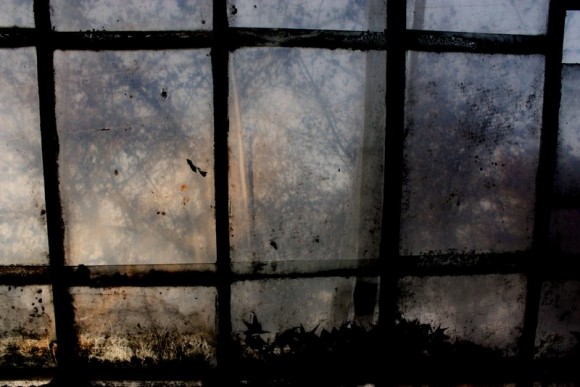Opening words to a photo exhibition by the poet János Áfra.At first sight, Zoltán Csonka’s works seem snapshots, but in fact, more concentrates in them – from the point of view of time dimension, and also visual stratification. Also the title of the exhibition expresses that they are “drawings”, “Winter drawings”. If we would like to get to know, what kind of creative attitude or conception is behind the title, it is worth carefully observing the pictures of the exhibition. What can we exactly see? – Spaces turning into each other, falling into themselves. Time organises them together and decomposes them. The shift. Visuality of time, more precisely, visuality of landscape changing in time, even more, the position of the continuously moving observer, who realizes organisation of the paintings.
In this case we could also say that this observer is the objective of the camera, as, finally, the machine localizes the pictures, but the point of view – the look – always depends on the sensation of the mind, and all our technical extension gains its function only by the consciousness residing inside us. A picture for can only be seen as the subject of our own sight and perspective. Camera objective itself does not compose, it just creates possibility. For the realisation of finding. Not for returning, not for fixation, only for the emphasizing of aspects of things, or creation – can we say a little bit more extremely or pathetically.
Pictures of the exhibition, on the level of their formal manifestation, just like in their visual language, reflect on the complex mechanism of perception, on aspects over material, presentiment of which is somehow able to re-organise in us, what we see. It is able to make subjects worth for re-organisation recognisable. Is able to emphasise and co-ordinate them the way that we find ourselves in a new world that did not exist before.
As title of Zoltán Csonka’s exhibition is showing, they are not simple photos, but express their effects on the observer– not depending on manual work behind them – like some kind of photographic drawings – and at some places already finely worked out paintings.
“Winter paintings”. “Winter”, because they were made in the most unsure time of the year, when decaying defeats everyday things, when the snow is able to cover the differences between objects, as with the help of its naturality it uniforms men-made secondary reality. “Drawings”, because they express the freedom of creative imagination, preciseness of graphic techniques, avoiding the vision of documentary and punctuality, and their existence is not the result of one moment, but carry in themselves the traces of the photographer’s hand movement, the voices and shifts of the camera.

On these photos fresh snow alienates and takes us closer in the same time. If we are staying inside it, we became indicator points: this way it separates us from surrounding subjects, but also amasses passive theories of existence in our eyes. It creates a clear sheet, which can be defined by human and vehicle traces. But on this picture snow, just like death, expropriates not-moving as its own. As we do already know from Roland Barthes: photography is relative of death.
Photography enabled for the first time for faces on the pictures once unique to look back on us, but they can still exist as traces, memories, but even if these photos belong to still alive people, we can almost be sure, that they survive us, who are all source-bodies. They will keep their once-face, with their help we can follow up phases of our passing.
However, on Csonka’s photos people are not presented directly, in their material reality, maybe in the shape of imagined observer behind the objective. Winter pictures are the extended vibration of spaces without people, but we still can find some photos about that we can guess that contours of blurred human shapes appear, but in fact, probably our anthropomorphizing mind is playing with us, when we can seemingly detect the human in shifting shapes of moments cut out from nature. Lack of this creates special tension between itself and elements of winter landscape. In order to count down with this lack, we must them. Face fatal coldness, last forms of nature, the nature lost in the pictures.
Zoltán Csonka’s photo exhibition “Winter Drawings” can be visited in Aula Galery in Debrecen (Kassai Street 26).



















